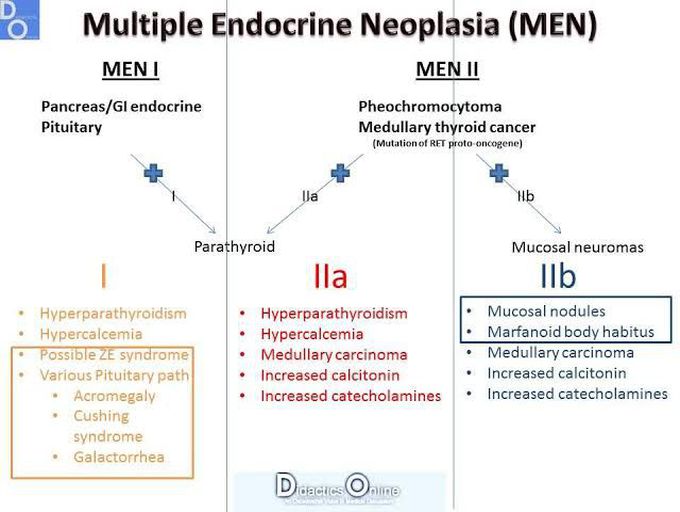


Multiple Endocrine Neoplasia
Multiple Endocrine Neoplasia: MEN I (3 Ps) - Pituitary, Parathyroid, Pancreatic MEN IIa (2Ps, 1M) - Pheochromocytoma, Parathyroid, Medullary Thyroid Ca MEN IIb (1P, 2Ms) - Pheochromocytoma, Medullary Thyroid Ca, Marfanoid habitus/mucosal neuroma
How is MEN1 diagnosed? MEN1 is suspected when a person has at least 2 of the most common tumors listed. Parathyroid tumor Pancreatic islet cell tumor Pituitary gland tumor If a person has a family history of MEN1, he or she is suspected of also having MEN1 if diagnosed with a parathyroid, pancreatic, or pituitary tumor. Genetic testing for mutations in the MEN1 gene is available for people suspected to have MEN1. A mutation in the MEN1 gene is found in about 80% to 90% of families diagnosed with MEN1. Approximately 65% of people with 2 or more tumors associated with MEN1, but no family history, will have a mutation in the MEN1 gene.
Menin is a protein that in humans is encoded by the MEN1 gene. Menin is a putative tumor suppressor associated with multiple endocrine neoplasia type 1 (MEN-1syndrome). ... However, the function of this protein is not known.


